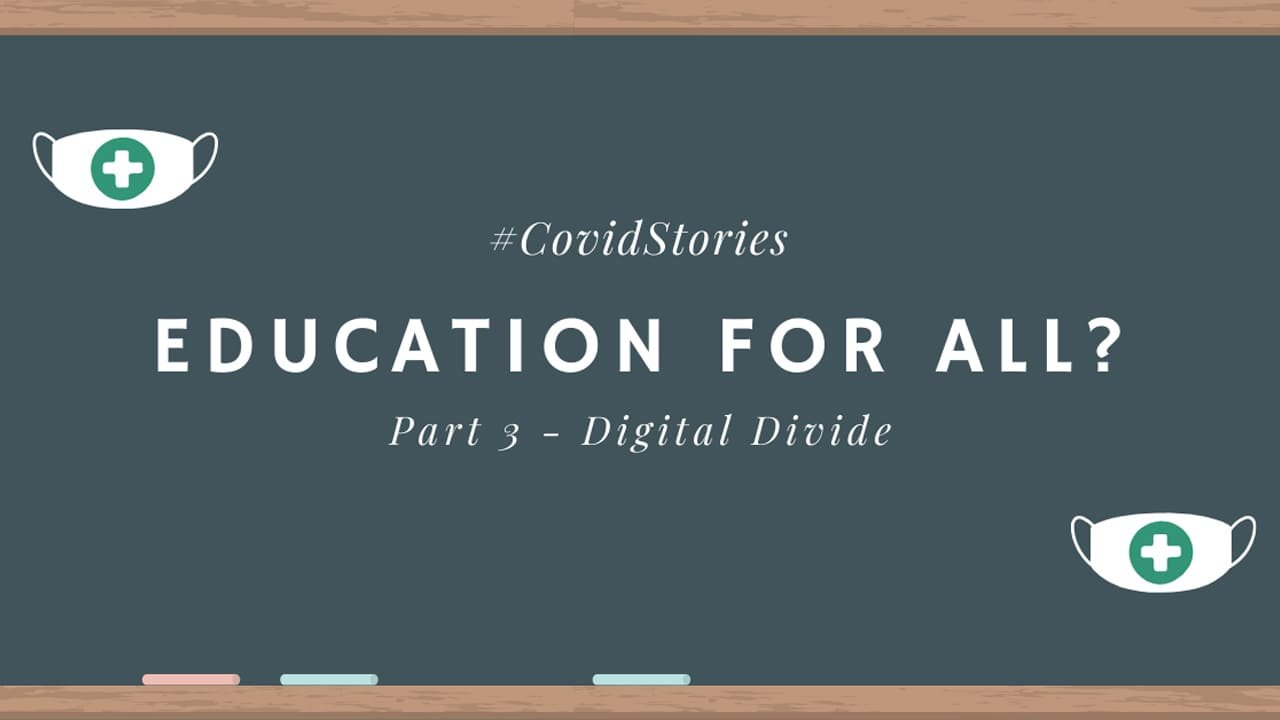#3 The Other Side of the Divide
Dr Pravin Patkar
Director, Anti-Trafficking Center
Azra Qaisar
Senior Project Co-ordinator
In January 2020, the Supreme Court of India ruled that access to the Internet was a fundamental right. Previously in 2016, the United Nations had acknowledged that access to the internet was a right but like many other necessities, it remains a privilege in India.
In the current crisis, many education systems across states are using the internet to facilitate e-learning among their students. Recently, in Delhi, the state government started e-learning classes for their students. While this seems to be a positive move that seeks to ensure that students don’t lose touch with their studies amid the lockdown, what it fails to incorporate is the digital divide. The digital divide refers to the gap that exists between those that have access to information and communication technologies, and those that do not. In a nation of 1.3 billion people, only 500 million of its population has access to the internet, which means that over half of India is on the other side of the digital divide.
The digital divide is further complicated by issues of caste, class, gender, region, and so on. In Kashmir, a whole region still does not have access to high-speed internet, depriving the entire student population of a region of easy access to education. Some remote areas of Chhattisgarh and Jharkhand have not seen electrification yet. The digital divide is the single most important factor that is going to function as the greatest divider to fuel inequalities and unfair competition, especially for children who continue to face problems of survival and live in remote geographical areas. Meanwhile, in Delhi alone, 16 lakh children are estimated to not be able to access e-learning due to a lack of access to the technology.
Beyond technical infrastructure
The issues related to accessing online education are not merely about the technological infrastructure but also the socio-economic and familial context that the child is in. It is important to recognize that even if the family has a phone, it may not be a smartphone. The child or the family may not know how to enable features to access resources. The family member who owns the phone may not be at home at the time of the class or may take the phone with them if they are an essential worker. It is also possible that the family may have a phone but not enough money to pay for internet services. Many users might not be aware of ways to be safe online.
Gender will affect access to education, and must not be overlooked. In many households, only the patriarch or the male member has a smartphone and the women or girls in the house have regular phones, thereby affecting their access. If there are two children in the house and both have to attend classes with limited resources, then one of the children will lose out. If the child is a girl, the patriarchal nature of the society dictates that she would be the one more affected. Also, women who are caregivers (mothers) will have to ensure that the child attends the classes, adding to their responsibilities of ensuring access to education.
Children with disabilities are also not being talked about while discussing online education. In the case of children with disabilities, the parents may not be equipped to use the technology either, even if available. Certain children with disabilities will need assistance to navigate the hardware and the software, expecting such children who may be first-generation learners to get this assistance from their primary caregivers is unfair.
Children in institutional care are also affected by the digital divide. For children staying in child care institutions, especially those run by the government and located in areas where getting continuous electricity is a luxury, access to e-learning does not seem to be a possibility in the current circumstances. CCIs are functioning with limited capacities and may not be equipped to facilitate digital learning. Currently, not all CCIs are equipped with laptops and in some cases if the CCI’s do have laptops, they are not enough for all the children. They may have online resources to ensure continuity in learning but lack of infrastructure and hardware makes it challenging to do the same. In some cases, the members of the staff are using their phones to ensure access to education but that is neither feasible nor safe as an option for the residents.
It is also important to recognize that the digital divide will also affect children who had re-joined education after a gap or had dropped out earlier. They might have gotten another opportunity to begin their education and might not be able to do so, if the conditions require them to have access to phones and the internet.
Prerana’s experiences
At Prerana, we often work with many first-generation learners. Many of the children in our Night Care Centers are first-generation learners whose mothers do not even have access to a phone, let alone a smartphone. Most children we serve in the red light areas are children with single parents, the mother who herself is now struggling to survive. Without any documents like a ration card, they are unable to use the public distribution systems and are struggling to get the free dole of food grains from charities and the government. In the absence of that, they are forced to buy basic foodgrains from the open and obviously exploitative market. In some cases, even to benefit from a variety of charities, they have to use their phones. Many women do not have a phone and the few that do not have the money to pay for cellular services as their earnings have completely stopped ever since the lockdown. In such circumstances, the talk of digital technology, online education, and ICT is like adding salt to injury.
Similarly, our Sanmaan team works with children rescued from begging who mostly live on the streets with their families. These families often do not have access to food, toilets, or any other basic amenities. Many such children study in municipal and tribal schools and will not be able to access education through digital technology.
Bridging the gap
In Maharashtra, the government has planned to be inclusive by using radio and television for education for classes 1st to 9th during the lockdown. This could help reach students with no or limited internet access, and also students with visual impairment. It could also help children with hearing impairment if sign language is used simultaneously. It would be interesting to see if and how these new measures would be received by young learners.
Technology boosts advancement and economic prosperity by offering a competitive edge. The advantages of the adoption of digital technology for sustaining education will give a special advantage to metropolitan and other city-based children, who will monopolize these advantages. People from underserved, rural, and lower socio-economic backgrounds will face days of compounded difficulties and additional neglect by the state and society. The digital divide which is based on original inequalities in society will exacerbate the unjust inequalities and in turn increase the digital divide itself.
These concerns pose a risk to many children being left behind while the world moves online. Education could become a privilege again, as accessing it as a right might be difficult in the absence of social and economic capital in the current times.
This blog is part three of our series “Education for All?”, where we will discuss the impact of the lockdown on education. Through this series, we hope to provide a quick understanding of the obvious repercussions of the lock-down brought by the spread of Covid-19 on education.









Follow